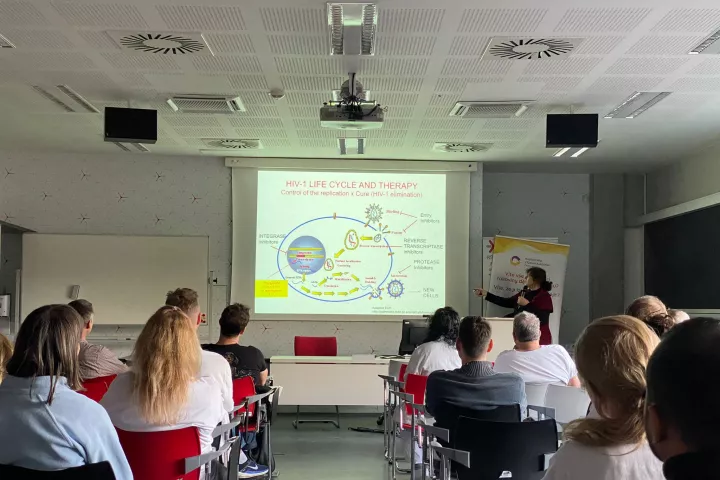Tuesday, December 19, 2023
1:00 PM / Seminary room 1.09
We'd like to invite you to another lecture of Mendel-Zirm Lecture Series. This time, the speaker is Zora Mělková, MD, PhD from Virology lab, Department of mmunology and Microbiology and BIOCEV, First Facutly of Medicine, Charles University.
Abstract
HIV-1 infection is an uncurable condition that can be only controlled by antiretrovirals. Antiretrovirals target the replicating virus, while the latent HIV-1, i.e. the proviral DNA, is not affected by the available therapeutics nor recognized by the immune system. Thus, therapeutic approaches toward functional or sterilizing cures have been intensively searched for. These approaches focus on strategies targeted at epigenetic modifications of chromatin and HIV-1 provirus (namely “shock and kill” and “block and lock” strategies), therapies targeting the immune system, as well as hematopoietic stem cell transplantation or gene editing approaches. The “shock and kill” strategies employ so-called latency-reversing agents (LRAs) to modify the chromatin landscape and allow transcription and translation of the latent provirus, which should be followed by the elimination of the latently infected cells. Most explored LRAs include histone deacetylase and DNA methyltransferase inhibitors or demethylating agents, bromodomain inhibitors, and protein kinase C inducers. However, none of the approaches effectively decreased the size of the HIV-1 latent reservoir in clinical trials.
We have focused on the use of redox-modulating agents because of the causative role of redox stress in HIV-1 pathogenesis, in the function of redox-sensitive transcription factors, in the induction of epigenetic modifications as well as in immunity. Namely, we have explored the therapeutic potential of heme arginate (HA) or Normosang (Orphan Europe/Recordati). In our previous work in tissue cultures, we demonstrated HIV-1 latency-reversing properties of HA and analyzed the effects of individual heme degradation products, revealing the mechanism of HA action on HIV-1 replication and latency reversal. Consequently, we have launched a pilot clinical study with the administration of Normosang to HIV-infected subjects. The study's results demonstrate the latency-reversing properties of HA in vivo and its ability to decrease the size of the HIV-1 latent reservoir.
In tissue cultures, we have also studied HIV-1 latency-reversing properties of several other drugs, including disulfiram (Antabuse). Similarly to HA, the selected agents did not display any latency-reversing properties alone, but revealed a synergy in combination with PKC inducers. We have also studied the effects of disulfiram in combination with heme arginate, with the results indicating strong synergistic effects.
In summary, heme arginate alone or in combination with other agents may be effective in the attempts to reactivate and purge the HIV-1 latent reservoir in humans.



